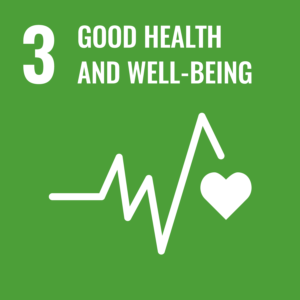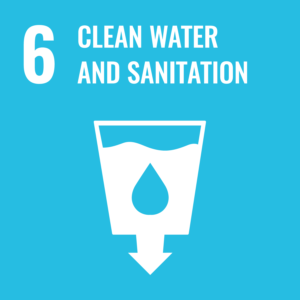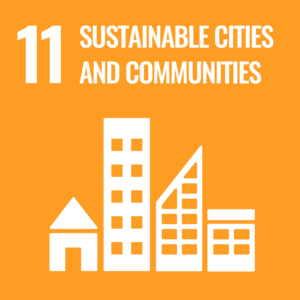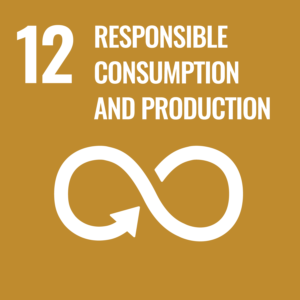This website uses cookies so that we can provide you with the best user experience possible. Cookie information is stored in your browser and performs functions such as recognising you when you return to our website and helping our team to understand which sections of the website you find most interesting and useful.
News
PVC Products Play an Essential Role in Reaching UN Sustainable Development Goals
The Vinyl Institute has actively participated in the United Nations Intergovernmental Negotiating Committee (INC) meetings for over a year, starting from INC-2 in Paris. We’re now approaching INC-5, which will occur in Busan, South Korea. This will be the last scheduled meeting, and delegates hope to reach an agreement before leaving South Korea.
The primary goal of these meetings is to develop a legally binding instrument to address plastic pollution. We believe a strong public/private partnership is essential for creating a science-based agreement that prioritizes a people globally. Our aim is to help create a circular economy for all plastics, eliminate plastic pollution, and improve global plastic recycling.
Participating in the INC process has been a valuable opportunity for our organization to share information with other delegations. PVC has, long been identified as a problematic plastic – however we believe this classification is inaccurate.
Numerous critical applications of PVC are instrumental in successfully achieving several United Nations Sustainable Development Goals.
For example:
One-quarter of all medical devices utilize PVC due to its performance and cost-effectiveness.
 The success of UN SDG three, “Good Health and Well Being,” relies on PVC. One of the most important applications is in PVC blood bags, which provides long, stable, and safe shelf life for the blood. When stored under refrigeration, blood stored in a PVC bag can last for up to 49 days. While much blood is used within a few weeks, there are several reasons why a storage period of up to 49 days is crucial for preserving the more than 14 million units of blood transfused in the US annually:
The success of UN SDG three, “Good Health and Well Being,” relies on PVC. One of the most important applications is in PVC blood bags, which provides long, stable, and safe shelf life for the blood. When stored under refrigeration, blood stored in a PVC bag can last for up to 49 days. While much blood is used within a few weeks, there are several reasons why a storage period of up to 49 days is crucial for preserving the more than 14 million units of blood transfused in the US annually:
The warehousing and distribution of the national blood supplies are based on up to 49 days of shelf life. Patients’ safety depends on this stable supply of blood components stored in blood bags, especially red blood cells which must meet the criteria of a low hemolysis rate without visible hemolysis in the supernatant.
PVC flooring, wall coverings, and furniture in healthcare facilities can help prevent the spread of disease and infection due to their excellent surface properties and cleanability. PVC products are necessary to safely disinfect hospital rooms and medical facilities since they are best at withstanding harsh cleaning solutions.
PVC also protects medical personnel. Doctors on the front lines battling some of the most virulent diseases in the world rely on PVC. It remains a critical part of helping protect medical professionals and caregivers confronting serious contagions, such as COVID-19, by constructing protective shields and outer garments. Many of these same devices have been used to protect doctors and nurses combating Ebola for years.

PVC pipes safely deliver clean water and wastewater.
Under UN SDG six, “Clean Water and Sanitation,” PVC pipes are the preferred choice for both drinking water and sewer infrastructure. PVC pipes are critical components of desalination plants and provide clean
drinking water to arid regions. PVC pipe’s smooth, non-corrosive surface stays clean even after decades of use, unlike iron pipe, which suffers from tuberculation, a form of internal corrosion and bio-film contamination that can be a breeding ground for bacterial, like E. Coli and Legionella.
PVC pipes are a lower-carbon solution for water infrastructure.
 If the world hopes to achieve UN SDG eleven, “Sustainable Cities and Communities,” then PVC must not only be permitted but actively encouraged as the way to achieve a low-carbon piping system infrastructure. PVC has a lower embodied carbon than other pipes like iron, copper, cement, or clay. PVC is the lower carbon solution for new or replacement infrastructure, with a documented lower carbon footprint. furthermore, durable PVC pipes are also recognized as the longest-lasting among all pipe materials, which means fewer replacements are needed, reducing the carbon needed to maintain a system over time.
If the world hopes to achieve UN SDG eleven, “Sustainable Cities and Communities,” then PVC must not only be permitted but actively encouraged as the way to achieve a low-carbon piping system infrastructure. PVC has a lower embodied carbon than other pipes like iron, copper, cement, or clay. PVC is the lower carbon solution for new or replacement infrastructure, with a documented lower carbon footprint. furthermore, durable PVC pipes are also recognized as the longest-lasting among all pipe materials, which means fewer replacements are needed, reducing the carbon needed to maintain a system over time.
A McKinsey study found that PVC pipes produce significantly lower total greenhouse gas emissions than other pipe materials during production. In sewer pipe applications, PVC has lower GHG emissions, approximately 45 percent lower than reinforced concrete pipes and 35 percent lower than ductile iron pipes.
PVC applications provide food safety & security and stop waste.
Under UN SDG twelve, “Responsible Production and Consumption,” PVC applications play a critical role in providing food safety and security and reducing food waste. PVC films protect food products from microorganisms that breed quickly on uncovered food and help prevent food waste. Preliminary findings of an academic study on the efficacy of different meat wraps also identified PVC wrapping as the option that created the best protein environment. The meat stored in PVC wrap was found to have spoiled after meat wrapped in butcher paper and polyethylene.
Used as an interior metal can liner, vinyl coatings protect the can contents from imparting metallic flavors into the food or beverage and protect the can from corroding due to acids in the food or beverage, thereby increasing product shelf-life. PVC sealants preserve flavor and provide airtight seals for caps and closures on food and beverage bottles and jars, keeping food fresh and preventing bacteria from accumulating.
Food security is achieved with PVC piping and drip irrigation to deliver water and nutrients in a targeted manner to outdoor farms, as well as to indoor growing operations where food can grow locally in areas of the world that have relied on imports. In addition, clear PVC tubes are used as a key material of construction in algae bioreactors that create alternative sources of nutrition for human food, agriculture/aquaculture feed, and nutraceuticals.


